Do you want to learn how to migrate OS to SSD in Windows 10 free of charge? If so, you are in the perfect place!
There are many situations in which you might want to migrate the operating system of your computer. Generally, the first thing people think of in such a situation is to clone the hard drive. However, a better option to consider is to move the OS to a new SSD to enjoy fast speed and numerous other benefits of SSD.
In this article, you’ll get to know about the top methods of moving operating system to new SSD, so keep reading to learn all about it.
Part 1: Can I transfer my Windows 10 to a new SSD?
Part 2: Why Should I Move Windows 10 to SSD?
Part 3: Traditional Method:How to Migrate Windows 10 to SSD free?
Part 4: 6 Proven Solutions:How to Migrate Windows 10 to SSD without reinstalling?
- Way 1: PassFab 4EasyPartitionHot
- Way 2: DiskGenius
- Way 3: EaseUS Todo Backup
- Way 4: AOMEI Partition Assistant
- Way 5: ISumsoft Cloner
- Way 6: MiniTool Partition Wizard
Part 5: FAQs about Windows 10 migration
Final Words
Part 1: Can I transfer my Windows 10 to a new SSD?
The very first question that arises is whether it is even possible to migrate OS only to SSD. The answer is yes, you can definitely transfer your OS, such as Windows 10, to a new SSD.
There are different tools – both paid and free – available to help you migrate Windows 10 to a new SSD without reinstalling. In order to make this process successful, you'll need a new SSD and suitable windows migration software.
Part 2: Why Should I Move Windows 10 to SSD?
There is no doubt that you can transfer OS to new SSD by using the right OS migration software. However, you might be wondering why you should move your Windows 10 to an SSD in the first place. There are several benefits of migrating transfer the OS to a new SSD.
Let’s discuss these benefits in detail.
Why use an SSD as an operating system disk?
- SSDs are significantly faster than traditional HDDs. As a result, you can enjoy faster boot and load times by using an SSD as an operating system disk.
- SSDs provide better performance in terms of transfer speeds and data access.
- SSDs do not have any moving parts. HDDs are susceptible to mechanical failure due to such parts, but you don't have to worry about it in SSDs.
- SSDs consume less power than HDDs, so they are more energy-efficient.
- SSDs produce little to no noise, so you can expect to use your system without any noise.
- SSDs are typically smaller and lighter than HDDs, so they will take up less space in your computer.
Why do you perform OS migration for Windows 10?
The primary motivation behind OS migration can greatly vary from situation to situation, but some of the main reasons why you might want to perform OS migration are:
- You want to speed up your system by migrating the OS from a traditional hard drive to a modern and faster SSD.
- You want to transfer your data and OS to a larger disk.
- Creating a full copy/backup of your data.
- Maximize the overall performance of the system by moving the operating system to a new SSD.
- You don't want to go through the process of installing an OS, such as Windows 10 on a new SSD and save time by migrating the existing OS.
Part 3. Traditional method to migrate OS to SSD Windows 10
There is a traditional method that you should know to migrate OS to SSD Windows 10 free that does not involve any third party. It's an extensive process that you can complete by following these steps:
- Connect your SSD
- Create a System Image File
- Install the Windows
First of all, you should connect your SSD to your computer system. You can simply do it by using a USB connecting cable and plugging it into your computer. Once you have connected the SSD to your computer, you can check the available space of the disk from the properties.
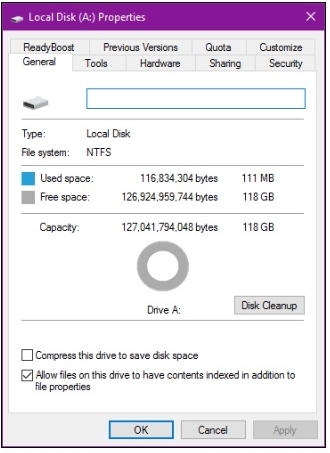
The next step to migrate OS from HDD to SSD involves creating a system image file that will have all essential settings and backup required to transfer the entire OS to a new SSD. Open Backup and Restore from the Control Panel and choose the create a system image option.
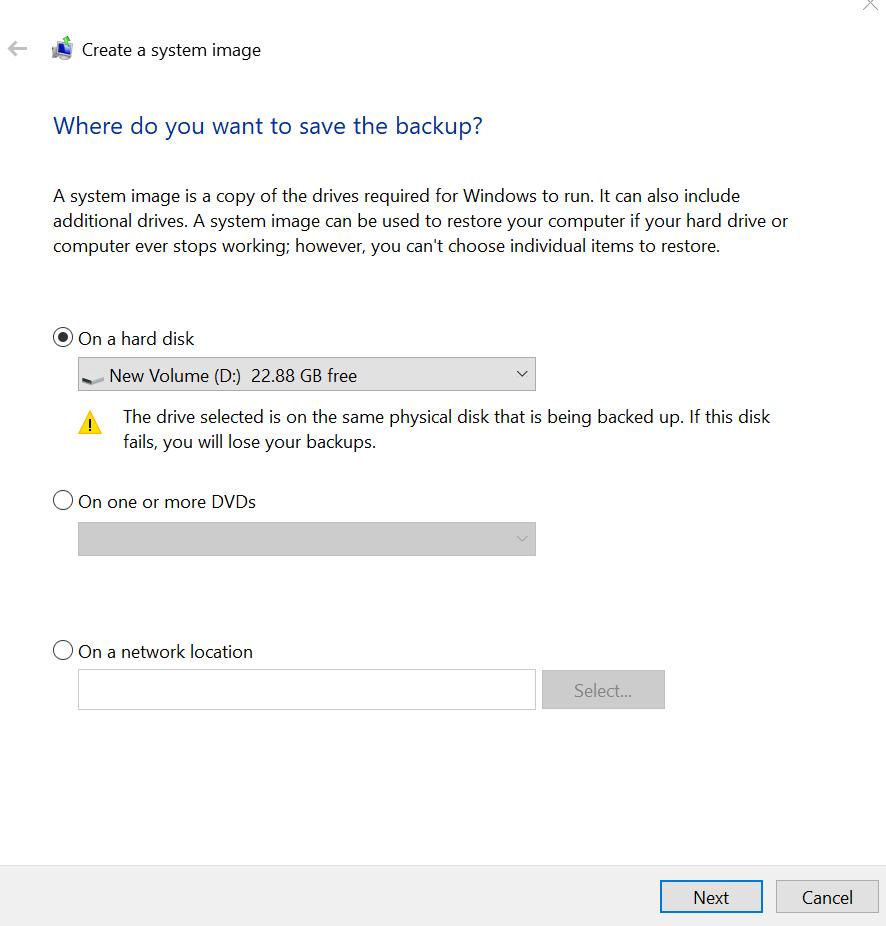
From here, you should select your primary hard drive in which the OS is located. Click on next and follow the prompts to create an image file.

Once you have obtained the system image, you will have to install windows on your connected SSD. Download and launch the Window Media Creation Tool on your system and select the option to “keep personal files and app.”
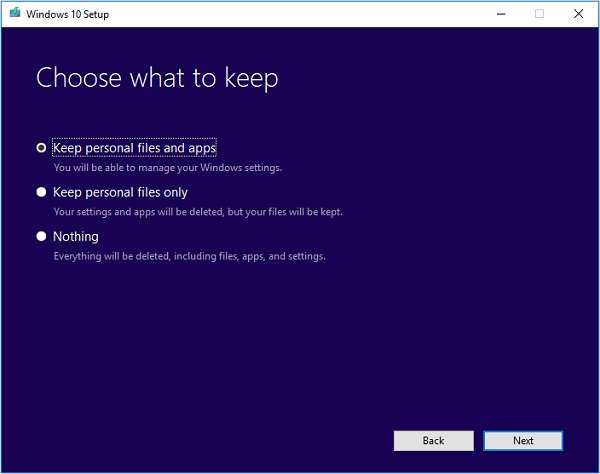
Access the advanced options to migrate OS to new SSD using the system image recovery file.
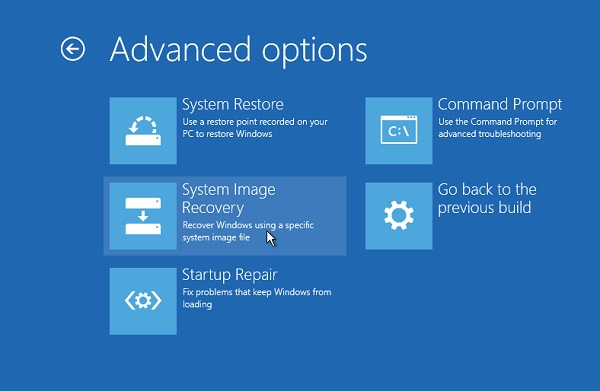
This will open another wizard in which you have to choose the location in which the system image file is located.
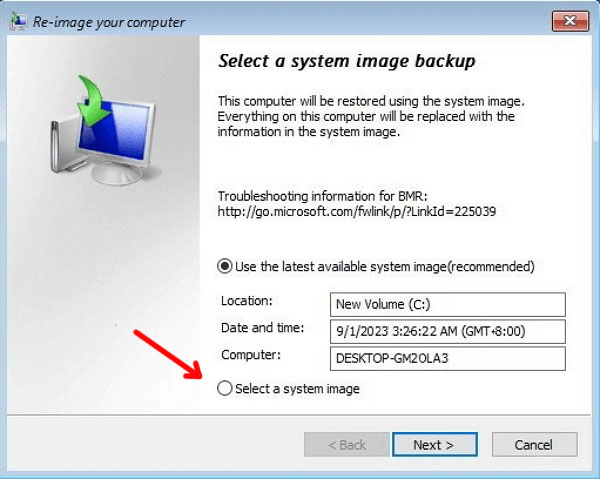
Click on next after choosing the file location and let the process complete. In these steps, you'll be able to transfer your Windows 10 from HDD to SSD
Part 4: 6 Proven Solutions: How to Migrate Windows 10 to SSD without reinstalling?
The traditional method of migrating OS to SSD can be complicated and time-consuming. Moreover, it involves reinstalling Windows 10, which you might not want to do.
This is the reason why it becomes important to use third-party tools to migrate Windows 10 to SSD without reinstalling Windows. These tools make the entire process of OS migration easier, quicker, and smoother.
Let's discuss some of the best tools for this purpose.
Way 1: PassFab 4EasyPartition Hot
If you are finding the best solution to migrate OS to an SSD and wondering how do I move Windows to another drive, then you’ll find PassFab 4EasyPartition to be the best option for this purpose. It’s a user-friendly and efficient tool that provides a wide range of features related to OS migration, disk partitioning, resizing, and moving Windows to a faster SSD with only a 1-click option.
Moreover,PassFab 4EasyPartition supports Windows 11, 10, 8.1, 8, and 7, so you can enjoy its following features on different versions of the Windows OS:
- Migrate the OS without reinstallation
- Safe and secure migration
- Complete OS migration, including data, software, and system settings
- Migration to a faster and better-performing SSD
- Migration to a larger HDD is also possible
- Simple, clean, and easy-to-use interface
- Download and install the tool.
- Connect the new HDD or SSD to the computer to which you want to migrate the OS.
- Launch the tool and select the source disk (the disk you are going to migrate from) and target disk (the disk you want to migrate to). Select the Start button to start the migration process.
- After the migration loading is completed, you’ll be able to boot your computer OS from the new disk.
In order to successfully migrate OS with PassFab 4EasyPartition, you have to follow only these four steps:
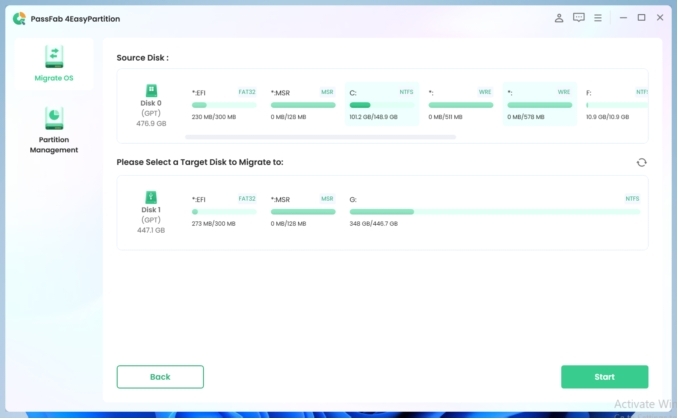

In these simple steps, you can use PassFab 4EasyPartition to migrate OS easily and quickly.
Way 2: DiskGenius
DiskGenius is a powerful and efficient disk management software for Windows computers. It provides a wide range of tools and features:
- disk space management
- partitioning, backup, repairing
- OS migration
Follow these steps to move Windows 10 to SSD using DiskGenius:
- Download and install DiskGenius on your computer to access its System Migration tool.
- Select the destination disk, i.e., the SSD to which you want to transfer Windows 10. Click ok to let the process of OS migration start.
- Before the migration loading begins, you might get a warning that the files on the SSD will be overwritten. Since you are using a new SSD, you won’t have to worry about it, so you can simply press the OK button.
- After the process is completed, you'll be able to access the newly migrated OS on your SSD.
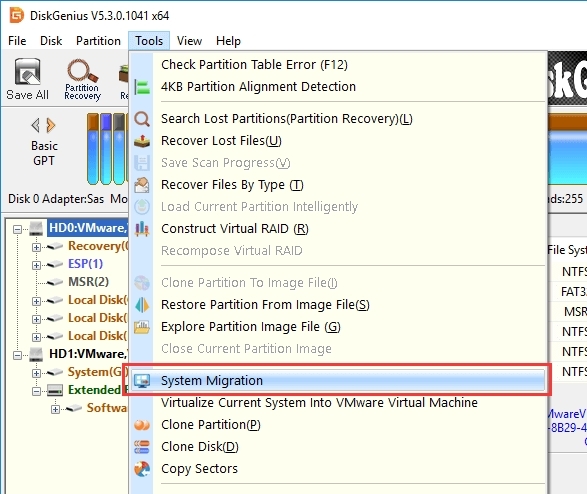
Way 3: EaseUS Todo Backup
EaseUS Todo Backup is a disk cloning software that is available for all of the latest Windows computers. It has powerful disk clone features through which you can migrate your entire computer, including OS, from HDD to SSD without losing any data by following these steps:
- Connect the target disk i.e., the SSD drive to your computer via a USB cable.
- Download EaseUS Todo Backup to your system to access its disk cloning and OS migration features.
- In the System Clone options, you'll find different disks connected to your computer system. Choose the destination disk and start cloning the drive.
- Wait for the process to complete and boot the system from the cloned device to enjoy your OS on the SSD.
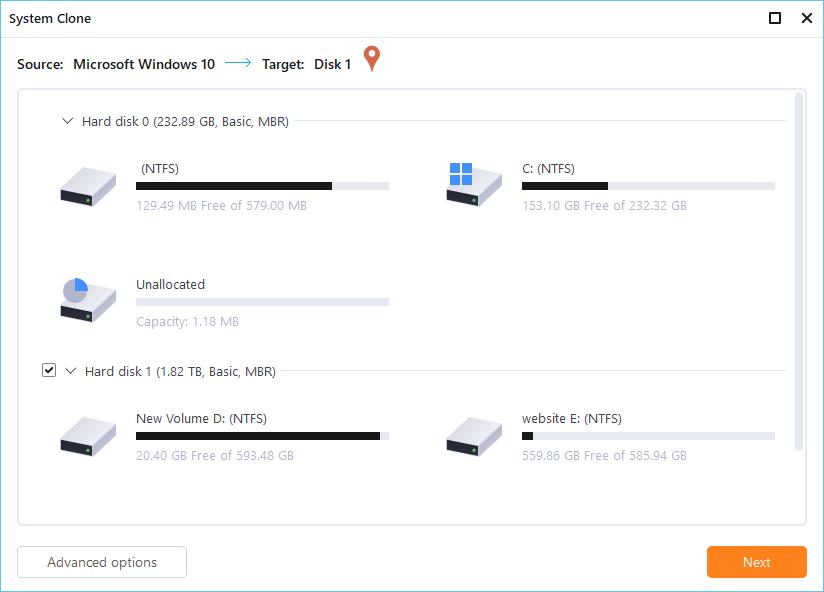
Way 4: AOMEI Partition Assistant
AOMEI Partition Assistant is one of the most comprehensive disk management software available on the internet. You can also use it in the process of moving operating system to new SSD for free. All you have to do is follow these steps:
- Connect your SSD and select the drive (typically the C drive) from which you want to migrate the OS.
- Press the Process button to start migrating the OS to SSD.
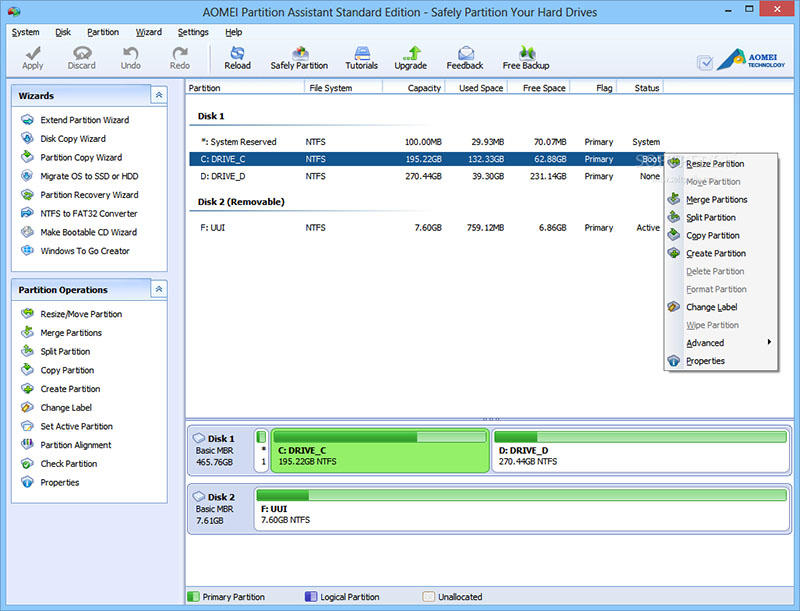
Way 5: ISumsoft Cloner
iSumsoft Cloner has a number of disk cloning features, including OS migration, through which you can make an exact copy of the hard drive into an SSD.
You can clone an entire operating system, including the installed software and data files using iSumsoft Cloner by following these steps:
- Install iSumsoft Cloner on your computer, open it, and choose the Disk Clone option.
- Select the hard drive in which your OS is located, and then select SSD as the target disk.
- Click on the Start button to start the cloning process and get your entire OS migrated to the SSD successfully.
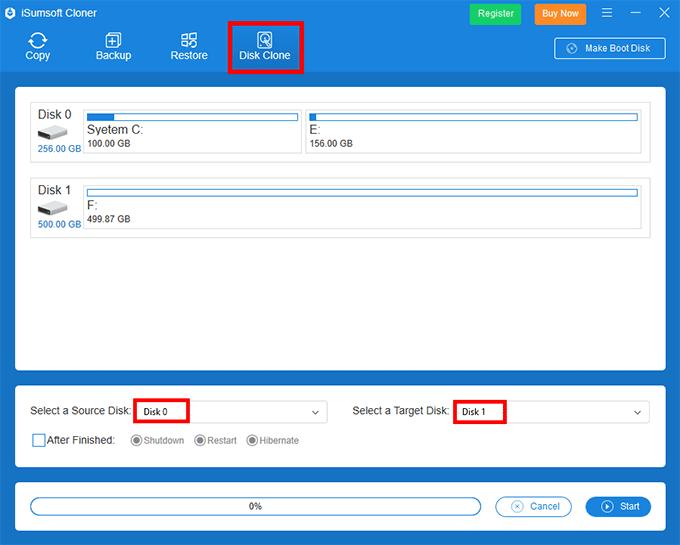
Way 6: MiniTool Partition Wizard
Another reliable third-party disk partitioning and cloning tool are MiniTool Partition Wizard. It allows you to make a perfect clone of the disk when you are upgrading your computer or making backups. However, keep in mind that when you use MiniTool Partition Wizard, it'll wipe out the data from the destination disk.
If you want to migrate Windows 10 to a new SSD without reinstalling via MiniTool Partition Wizard, you should follow these steps:
- Download and install MiniTool Partition Wizard and open it.
- Open the Migrate OS wizard to access different options.
- Select the destination disk, i.e., the SSD, and choose the Next option.
- Access the other options, such as disk partitioning or resizing, before starting the migration process.
- Once the migration process is completed, you can enjoy Windows 10 on SSD.
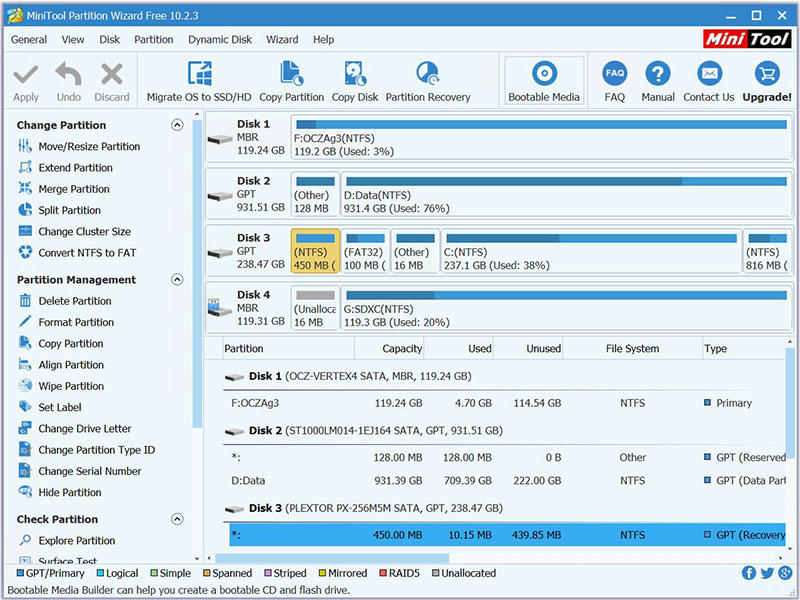
Part 5: FAQs about Windows 10 migration
Q1: Do I need to reinstall Windows when moving to an SSD?
No, it is not necessary for you to reinstall Windows when moving to an SSD when you are using a third-party tool. However, if you go with the traditional method, you'll have to do it.
Q2: How do I move Windows to an SSD without reinstalling?
You can use any of the third-party disk cloning and OS migration tool, such asPassFab 4EasyPartition, as discussed throughout this article. These tools allow you to migrate the entire Windows settings, data, and applications without reinstalling Windows.
Q3: Do SSD drives come with disk cloning software?
Some of the modern SSD manufacturers nowadays have started to offer disk cloning software. However, there is no guarantee that you'll find such software in the SSD of your choice, so it is better to rely on an all-in-one disk cloning software, like PassFab 4EasyPartition.
Q4: Why choose PassFab 4EasyPartition?
You should choose PassFab 4EasyPartition it is reliable, user-friendly, and secure disk cloning software. It allows you to move the operating system to a new SSD without reinstalling Windows.
Final Words
The bottom line is that you can find many different ways to migrate OS to SSD Windows 10 free. You should make the right choice depending on your requirements and expectations from the OS migration process.
Generally, it is better to rely on a third-party disk cloning software, like PassFab 4EasyPartition, because it can help you safely transfer OS to a new SSD without reinstalling Windows. Moreover, you won't even have to follow any extensive steps to complete this process. Instead, you'll be able to complete the entire OS migration process quickly and easily.
